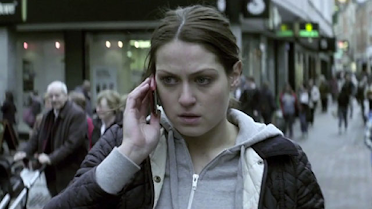Echo (2013)
its head after her scheme leads to a stranger giving her money for a cab to the hospital, for her to only get out of the cab minutes later. I have to admit, I felt played...
As the film goes on, Lewis Arnold subtlety unveils that the situation is not as black and white as it might seem. We see various different calls in the film, showing very different reactions from strangers as some help but others work out the true nature of Caroline's behaviour. Intertwined with these calls, Arnold reveals tidbits of information - hinting that her father was actually in a motorcycle accident earlier in her life. It's here when I realised this film wasn't about a scummy low life scammer, but was instead about a damaged and vulnerable young person who doesn't know how to deal with irreparable grief. The film ends with a final call that feels all too real. Tears stream down Caroline's as she frantically calls her mother, before the film goes silent, focusing us on Caroline's performance. As we don't see the scam, this ending is very open and can either be interpreted as a flashback of the actual moment as her fathers death, or a build up of emotions being released as Caroline reenacts one of the most traumatic moments of her life on a regular basis.
Mise-en-scene is key to this film as it holds a lot of symbolic meaning. The colour palette of the sets, clothing and props is muted and grey - immediately giving the film a sombre atmosphere. Props also play a key role to the meaning of the film; Caroline is often seen playing with a lighter, possibly symbolic of her 'playing with fire' with the scams she is running.
Cinematography in this film represents two different perspectives: Caroline's and ours as an outsider. Wide shots of the situation put us in the place of a spectator, with no bearing or investment in what's happening, and these are intertwined with mid shots and close ups that directly show us Caroline's emotions and what she herself is experiencing inside. The style of cinematography also changes as the film goes on. For the majority of the film the shots are static and precise, contrasted by the last act where it is handheld and frantic. This reinforces the idea that perhaps this last scene is a flashback of the the original incident.


Comments
Post a Comment